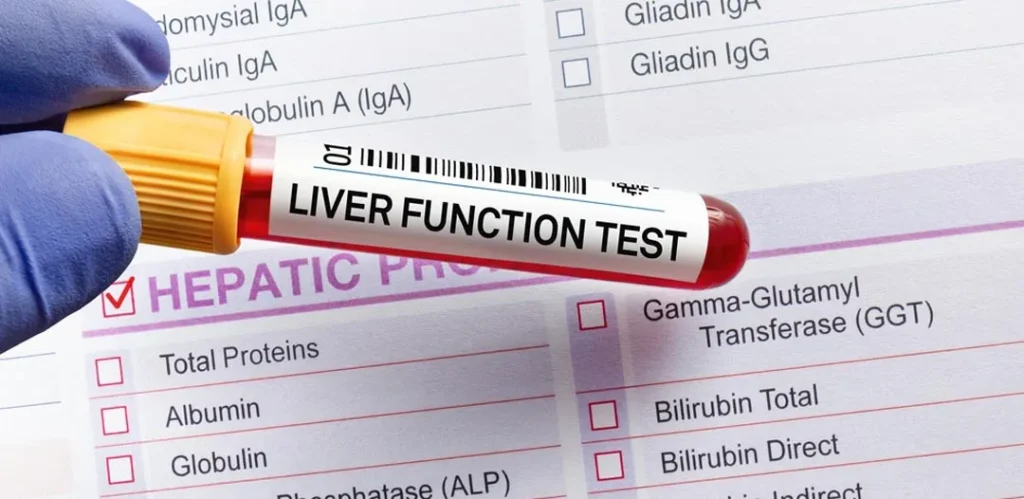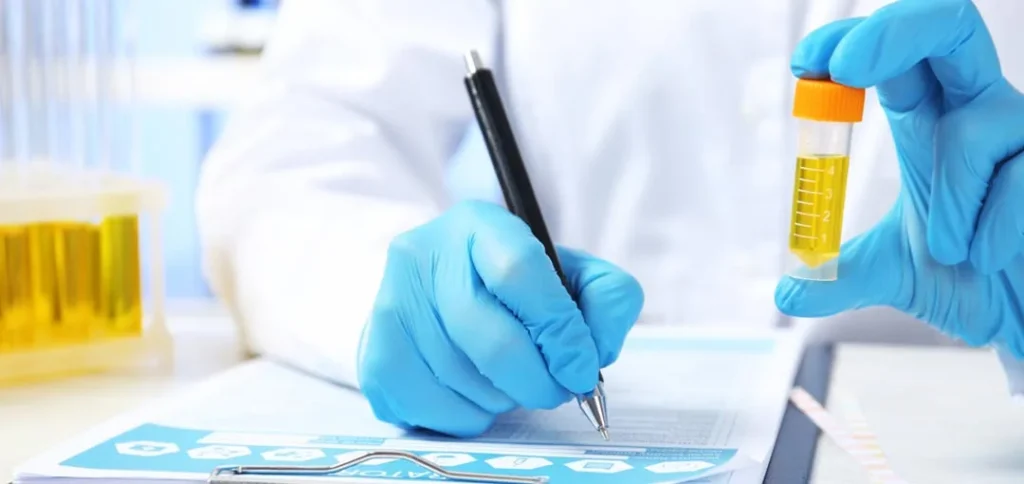Know the Duration of Meth in Your Body and Get Support to Quit
As our country becomes increasingly ravaged by drugs, methamphetamine or meth is coming back into widespread availability. If you or a loved one are battling the cycles of meth abuse, you may already know about this ‘quiet epidemic’ occurring alongside the more public flood of fentanyl into the US.
One of the vital aspects of a meth use disorder is understanding how long does meth stay in your system, influencing both short and long-term recovery outcomes. If you are struggling, you have found the right resource to get answers to this crucial question, and also to get options for support and getting clean.
At South Shores Recovery in Orange County, we crafted this article to delve into the factors that affect meth in your system and to help readers understand the duration of a meth high and its presence in the body. We will also detail how South Shores can provide you or a loved one who is struggling with meth with the solutions and treatment options needed to detox effectively and stay clean!
What’s the Duration of Meth in Your Body?
Meth can remain in your body for as long as 72 hours in urine and in hair follicles for as long as 90 days. If you or someone else is battling meth addiction or abuse, it’s vital to know what affects how long meth remains in your system.
What is Methamphetamine?

Methamphetamine, commonly referred to as meth, tina, crystal, or tweak, meth is a potent and addictive stimulant. Early forms of meth were originally included in bronchial inhalers and nasal decongestants, and it is still available for those suffering from narcolepsy as the drug Desoxyn.
However, in recent times, its use has spread far and wide – meth is now smoked, injected, and snorted by recreational users across the United States.
Meth increases the release of dopamine, a neurotransmitter associated with pleasure and reward, in the brain, causing heightened energy levels experienced by users and the rush of euphoria that keeps people coming back for more and more.
Meth is typically found in the form of a crystalline white powder known as crystal meth. It can also come in the form of a pill. This powerful stimulant is a highly addictive drug and can lead to several physical and psychological effects, according to SAMHSA, the Substance Abuse and Mental Health Services Administration (SAMHSA).
The Half-Life of Methamphetamine
To better understand how potent and long-lasting meth is, you need to understand what half-life is. The half-life is the measure of the duration it takes for your body to remove half of the meth consumed.
This figure varies depending on the individual to some extent. However, it is generally estimated that on average, it talks about 10 to 12 hours for meth to be metabolized and removed from the system.
Meth Half-Life: Understanding How Your Body Metabolizes Methamphetamine
As just mentioned, the meth half-life varies amongst individuals. This is based on factors we will be exploring further. The liver plays a unique role in metabolizing methamphetamine. After it has been ingested, the drug undergoes a breakdown, producing different metabolites excreted through urine.
When injected into the veins, meth effects are instantly experienced as compared to ingesting it orally. Understanding the half-life of meth is essential for a negative drug test. Another reason why the half-life is studied is because it offers insights into the psychological effects of meth.
Individuals struggling with meth usage should know about the duration of these effects so they can manage meth withdrawal effectively.
Factors Influencing How Long Meth Remains in Your Blood

The duration of meth in your blood depends on several factors. Understanding these factors is essential in treating meth usage. These factors include the following:
- Metabolic rate. Individuals with faster metabolic rates process meth more quickly than those who don’t. Thus, people with faster metabolic rates eliminate meth faster. Metabolism is influenced by various factors including age, body mass index, genetics, and overall health.
- Liver function. Another primary factor is the liver, as it is responsible for metabolizing methamphetamine. Impaired liver function as a result of liver disease will prolong the drug’s elimination in the bloodstream as well as the urine.
- Frequency and Dosage. Frequent and increased doses of meth will lead to its accumulation in the body, thus extending its presence in your system.
- pH levels. The body’s pH levels can also influence the reabsorption of methamphetamine in the kidneys, affecting its elimination time and detectability in the system. Your kidney function can also impact this process.
- Hydration levels. Proper hydration supports the elimination of meth from the body, but consuming too much water can come with hazards as well. However, it is proven that dehydration slows down meth withdrawal from the body.
People experiencing regular meth abuse may be dealing with any of these factors, and it is not uncommon for those using meth to have both impaired liver function and inadequate hydration.
How Long are the Effects of Meth?
Generally, the effects of methamphetamine are relatively short-lived as compared to its presence in the bloodstream. So, while its effect on the body can wear off, meth can remain in the body for some time (with 10 to 12 hours being the half-life of meth we established earlier).
How Long Does Crystal Meth Stay in Your System?

The duration that crystal meth stays in your system, as earlier mentioned, can depend on various factors. However, meth can be detected through the following tests:
Urine Test
A urine test is the most common method of meth detection, as it helps detect the presence of meth or its metabolites in the urine sample. Urine tests can detect meth within 2 to 4 days after use. However, with chronic meth users, it may be detectable in drug tests for a longer period.
Blood Test
Blood tests for meth help to measure to concentration of methamphetamine in the blood, thus providing a snapshot of recent drug use. Meth is generally detected in the blood between 1 to 3 days after use.
Saliva Test
Saliva tests detecting meth are particularly non-invasive, usually involving collecting a saliva sample. These tests are usually conducted for on-site or point-of-care testing. Saliva tests can detect methamphetamine between 1 to 2 days.
Hair Follicle Test
A small sample of the hair located near the scalp is collected for analysis for meth detection. In this case, hair follicle tests reveal meth use for up to 90 days. Some research shows that meth can be detected by a hair test for up to 120 days after use.
The Effects of Drug Purity and Method of Administration on Meth Detection
It is important to note that the purity of meth and the method of administration can significantly influence its effects, health risks, and detection in the body.
The purity of meth is measured in percentages. Thus, high purity levels can intensify its effect, leading to a more potentially harmful experience for users. Similarly, impure or adulterated meth may contain harmful substances, heightening the risk of health complications.
As for its administration, meth is delivered into the body through the following ways:
- Intravenous use by injection
- Smoking
- Snorting or nasal insufflation
- Oral ingestion
Understanding the interaction between drug purity and the method of administration is crucial for both users and health professionals seeking to address its withdrawal symptoms.
How the Body Processes Meth

Meth has a profound effect on the central nervous system. But how does it trigger a series of psychological responses? In this section, we explore the various stages during which the brain and body process meth.
1st Stage: The Rush of Dopamine
Upon ingestion, meth swims into the bloodstream and stimulates large amounts of dopamine in the brain. Meth users typically feel a rush of euphoria, as the neural synapses of the brain are flooded. These rapid releases of powerful neurotransmitters associated with pleasure contribute to the addictive nature of the drug.
2nd Stage: Settling in for the Ride
After the initial rush subsides, meth users enter the second stage marked by a heightened sense of alertness and increased energy. During this stage, you may experience heightened focus, reduced fatigue, and an elevated mood.
3rd Stage: The Binge
Most meth users enter the binge stage, where there’s a high compulsion to use meth regularly to prolong its pleasurable sensations. The physical and mental risks at this point are extremely increased, with meth psychosis and behavioral changes becoming common.
4th Stage: When Withdrawals Begin
After the effects of meth start to wane, users begin to experience meth withdrawal symptoms and the comedown or crash from meth. This stage is characterized by the complete depletion of dopamine, leading to fatigue, irritability, and increased appetite. Depression and suicidal ideation often increase at this time.
5th Stage: The Crash or Comedown
The final stage follows the prolonged stimulation of meth in the central nervous system. As the dopamine levels reduce, users will experience profound exhaustion, and this will often prompt a desire to seek and use more meth, starting the vicious cycle over again.
How to Get Meth Out of Your System
Getting meth out of your system can be a challenging process, especially for those who have become dependent on the drug to get through each day. Remember that South Shores is ready and waiting to provide not just effective detox for meth, but a comprehensive array of programs to support lasting recovery from meth!
Whether you are going it alone or seeking treatment, here are some general tips that you should consider when attempting to rid your body of this powerful stimulant:
- Stop its use. You need to stop the use of meth altogether as the body will begin the process of eliminating the drug. That means not even a little bit of meth can be taken to stave off withdrawals.
- Stay hydrated. Drinking the right amount of water can help flush out toxins through urine. However, you should avoid excessive water intake, as this can cause unhealthy side effects (not to mention resulting in a diluted urine sample, which also often causes suspicion.)
- Eat healthy meals. Consuming nutritious foods supports overall health and can contribute to the body’s recovery, as well as provide energy to overcome initial fatigue.
- Exercise. Regular physical activity can promote the elimination of toxins through sweat and support overall well-being during the challenges of early recovery.
- Consider Medical Supervision. Seeking medical supervision during the detoxification process is highly recommended, especially for individuals with a history of heavy or prolonged methamphetamine use. The psychological impact of coming off meth alone warrants as much professional support as possible to avoid depressive symptoms and relapse to using.
Methamphetamine Withdrawal and Detox

Breaking free from methamphetamine use is a challenging journey that often involves facing withdrawal symptoms during the detoxification process. As mentioned above, many of these symptoms are psychological and just as challenging to navigate as the physical symptoms of withdrawals.
How Long Do Meth Withdrawal Symptoms Last?
The timeline for methamphetamine withdrawal symptoms can differ from person to person. Typically, withdrawal symptoms may begin within a few hours to a day after discontinuing meth use.
Early withdrawal symptoms may include fatigue, increased appetite, and intense cravings for the drug. Over the next several days, individuals may experience more pronounced symptoms such as anxiety, depression, irritability, and disturbed sleep patterns.
The acute phase of methamphetamine withdrawal usually lasts about one to two weeks. However, some individuals may continue to experience lingering symptoms of methamphetamine addiction, including mood swings and fatigue, for several weeks or even months.
Post-acute withdrawal symptoms (PAWS) can persist, making professional support at a dual diagnosis treatment program such as South Shores crucial for managing the challenges of long-term recovery.
Get the Help Today at South Shores for Meth
Recovery from methamphetamine use is a journey best undertaken with professional guidance and support. If you or a loved one is struggling with methamphetamine use, seeking help from the specialists at South Shores for a safe and effective detoxification process is a wise decision.
At South Shores Recovery, we are dedicated to providing comprehensive and compassionate care for individuals facing meth or other kinds of drug use. Our experienced team of healthcare professionals offers personalized detoxification plans, counseling, and ongoing support to address both the physical and psychological aspects of meth use.
Contact us confidentially to learn about our services and how we can help you or a loved one overcome meth today!


Recent Comments